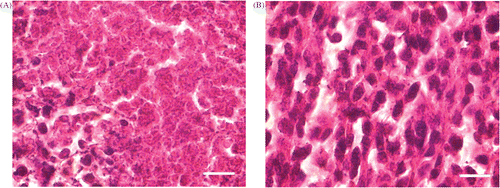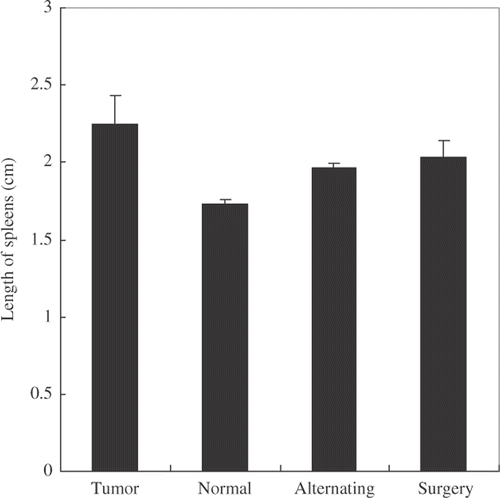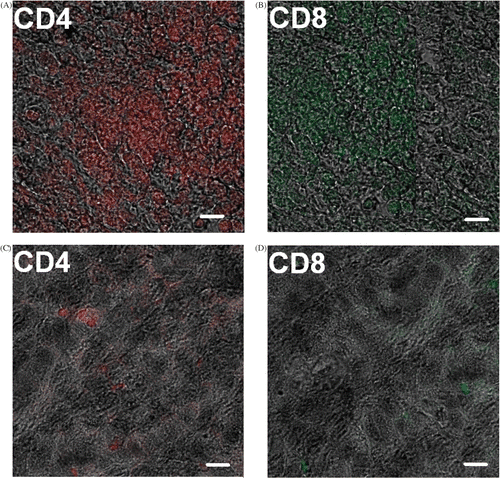Figures & data
Figure 1. (A) Histological analysis of tumor tissue after the alternating treatment. Immediately after the alternating cooling and heating treatment, the tumor debris was taken for H&E stain; (B) Histological analysis of tumor tissue without any treatment. The sections were viewed with 100× oil objective. (Scale bar, 10 µm) It showed that although the thermophysical treatment induced necrosis, there were still viable tumor cells remaining.

Table 1. Therapeutic results of the mice after different treatments.
Figure 2. Spleen size changes after different treatments. Three days after the alternating treatment or five days after the surgical resection, the spleens were taken and their maximal length measured. Tumor bearing and normal mice were used as the controls. The results showed that both surgical resection and the alternating treatment could alleviate splenomegaly (p < 0.05, n = 4).

Figure 3. Increased activity of CTL response in the mice cured by the alternating cooling and heating treatment. Three days after the alternating treatment or five days after the surgical resection, the splenic cells were taken. The CTL activity against 4T1 tumors (target cells) was examined using releasing LDH release assay (p < 0.05, n = 4).

Figure 4. Serum Th1 cytokines levels after the alternating treatment or surgical excision. Twenty-four h after the alternating treatment, a significantly higher level of both IFN-gamma and IL-12 was recorded as compared with surgical resection and normal control groups (p < 0.05, n = 4).

Figure 5. Immunohistochemical staining for immunocytes. Anti-CD4+, CD8+ cells antibodies conjugated to different fluorescent residues were used to observe the infiltration of T cells into the tumor debris. (A), (B): tumor debris after the alternating cooling and heating treatment; (C), (D): tumor without any treatment (Scale bar, 5 µm).
